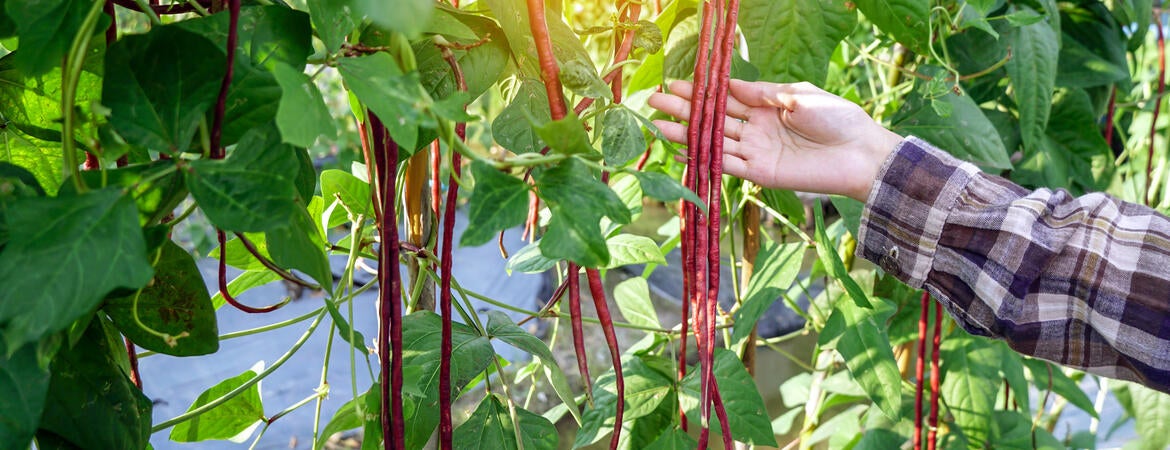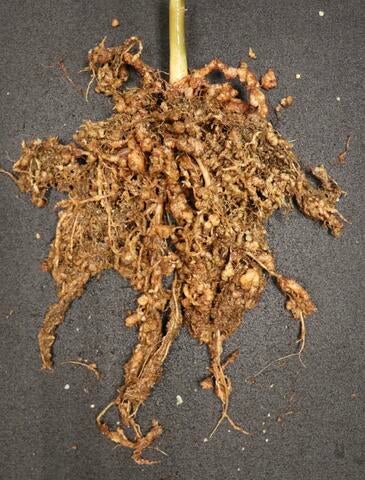
Climate resilient, nutritious long beans are unfortunately susceptible to aphids and nematodes. By creating four new pest-resistant varieties of the beans, scientists aim to reduce farmers’ reliance on pesticides.
These new varieties, and the methods used to develop them, are detailed in a new Journal of Plant Registrations paper.
Long beans are popular in Asia, Africa, and with Asian immigrant communities in the U.S. Also called yard-long beans because they can grow to nearly 36 inches in length, these plants can withstand high heat and humidity. What they cannot stand, however, are pests.
“All local varieties of long beans, until now, have been susceptible to aphids and root-knot nematodes,” said UC Riverside plant geneticist Bao Lam Huynh, first author of the paper.
Aphids attack the leaves of the beans and can kill the entire plant or render the beans unmarketable. Worse still, aphids rarely only attack one type of plant. “It’s very difficult to control aphids, as they can move from crop to crop on diversified farms,” Huynh said.
Similarly devastating, root-knot nematodes create abnormal growths called galls on the roots in order to extract nutrients. This reduces the plant’s uptake of water as well as nutrients, resulting in fewer beans. These attacks also leave the plants susceptible to rot and other microbial diseases.
To learn about pest management strategies, Huynh and his research team contacted a group of predominantly Hmong long bean growers through the UC Cooperative Extension in Fresno, Calif. The researchers found that long beans required the most pesticide of all their crops.
“Local consumers are aware of how much these beans get sprayed, so they’re reluctant to buy the beans. Consequently, the farmers are struggling to sell this product,” Huynh said. “Our idea was to develop resistant varieties not only to minimize the amount of pesticide but to help bring back the market for long beans. Thankfully, the California Department of Food and Agriculture was supportive of this idea.”
The CDFA supplied more than $400,000 for the researchers to develop these new varieties over a 32-month period, in collaboration with the University of California’s Cooperative Extension and farmers in Fresno. The team crossed local long beans with African cowpeas known for their resistance to these pests.
The result is three varieties of long beans that are much more aphid resistant, and one variety that repels root-knot nematodes. “The nematode-resistant variety can be grown in rotations to benefit other crops, as they could help suppress nematode populations in the fields where they are planted,” Huynh said. “Without plants like these, farmers would have to use a nematicide to control the worms.”
One of these newer bean varieties has shorter stems, so it will not require a trellis when it grows. This makes it much more amenable to mechanical harvesting. The beans of conventional varieties have to be picked by hand, one by one, because they require trellises, and this makes it difficult for machines to grasp the pods. Machine harvesting will further reduce the cost of producing the beans.
In the future, the team plans to develop varieties that are resistant to both types of pests. Meanwhile, the research team is reaching out to farmers in the Central Valley to introduce them to the new varieties.
“We want growers to see all the benefits of these new varieties, such as cleaner air from fewer pesticides, less expensive production, safer food, and hopefully, increased demand,” Huynh said.





